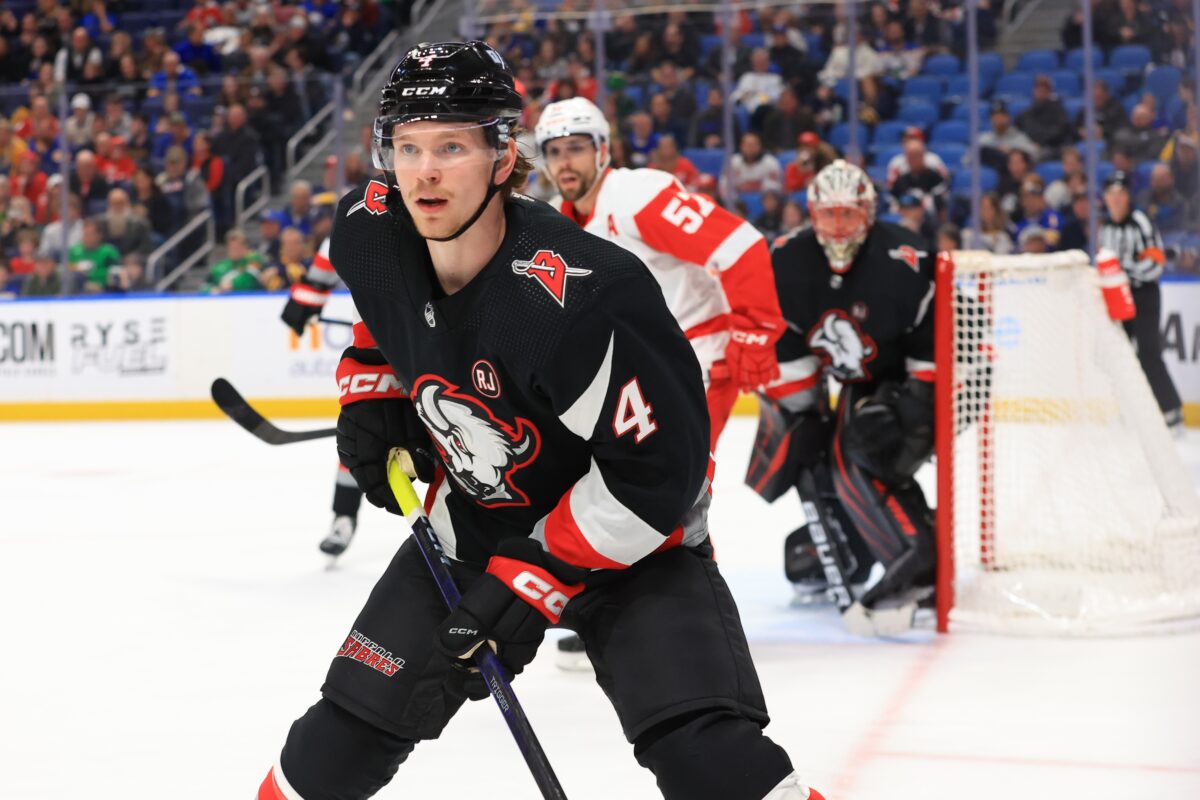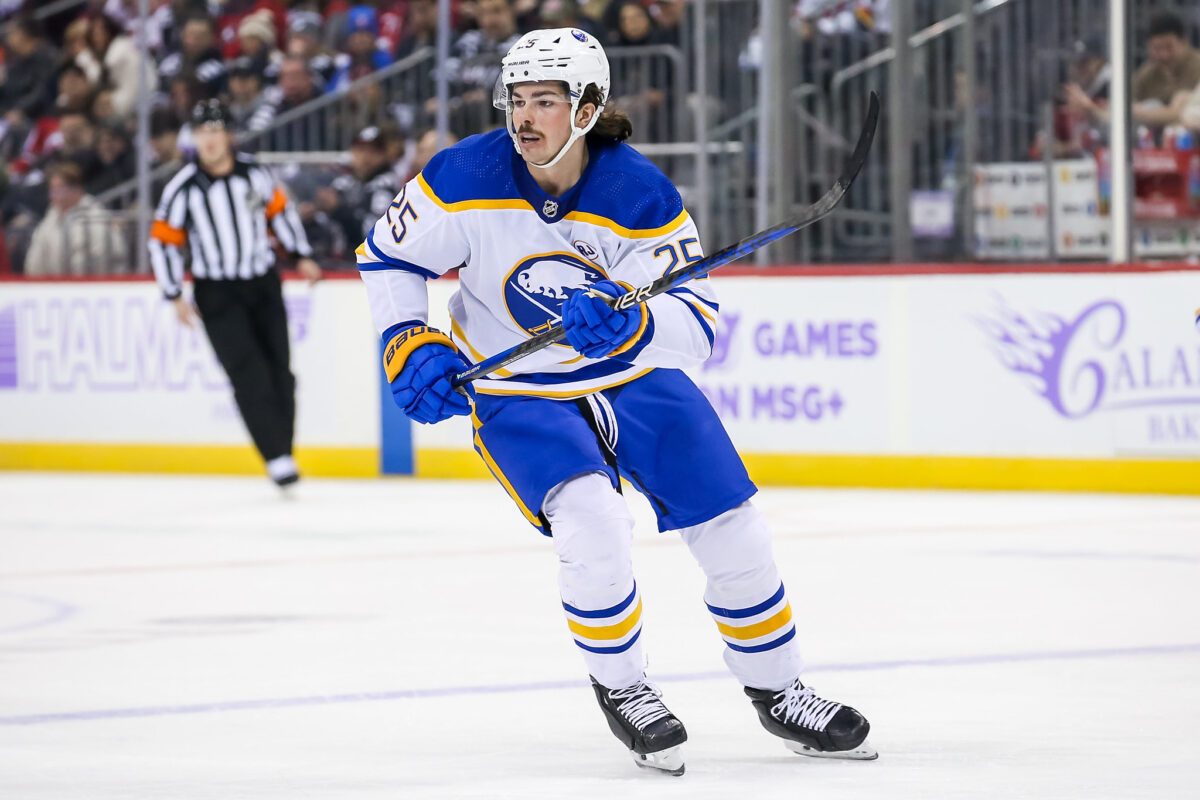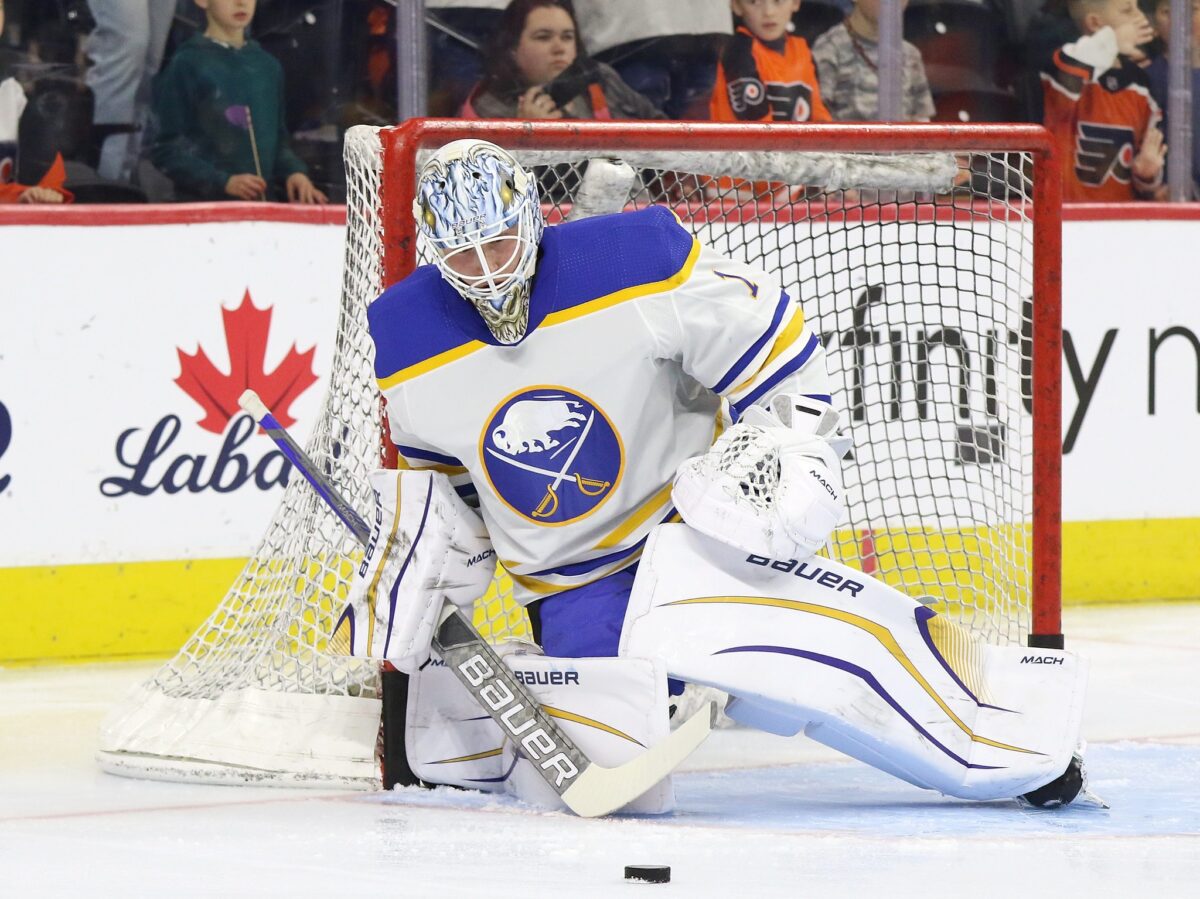The New York Islanders matchup against the Buffalo Sabres on Thursday night has suddenly become pivotal in the Eastern Conference playoff picture. The Islanders with six wins in a row before their March 11 loss to the Los Angeles Kings have leaped into the final wild-card spot. The Sabres, meanwhile, have struggled throughout the season, yet with two wins in a row, and seven wins in their last 11 games, they are only five points out of a playoff berth.
Related: Islanders Have Strong Odds to Make Playoffs After Soft Schedule
This game also features two defenses that have improved significantly in recent games, and more importantly, embody what a great defensive unit looks like in the modern game. The Islanders made subtle changes, while the Sabres went through significant changes to become one of the most exciting blue lines in the league that can take over games at both ends of the ice.
Sabres Adding Byram
The high-risk hockey trade general manager (GM) Kevyn Adams made at the deadline is already paying off. The Sabres acquired Bowen Byram from the Colorado Avalanche in exchange for Casey Middelstadt. The Sabres moved one of their best skaters and offensive weapons in Middlestadt, a center who has 14 goals and 33 assists this season, for a defenseman who struggled to remain in the Avalanche lineup.

The Sabres were betting on Byram’s upside, and that’s what they got. In three games, he’s scored three goals and an assist, and he’s making an impact on defense. With 24:39 of ice time, he’s defended the rush and limited scoring chances, and he’s one of the reasons why the team has only allowed five goals in the last two games.

The defensive unit already has size with Owen Power, who is 6-foot-6 and 218 pounds, and Mattias Samuelsson, who is 6-foot-4 and 231 pounds, leading the group. The Sabres needed speed and another playmaker on the blue line to help out Rasmus Dahlin at the point. It’s what they got in Byram, who is not only a great puck handler, but his shot is also making an impact.

The Sabres might not make the playoffs this season, and it’ll be an uphill battle to finish strong and leapfrog at least three teams in the process. However, it’s hard not to feel optimistic about their defense. It’s fast and has multiple skaters who can make an impact at both ends of the ice, and even with the longest playoff drought in the NHL, the Sabres have a lot working in their favor.
Islanders Replacing Mayfield With Aho
Scott Mayfield was having an awful season with the Islanders and just one season into a seven-year contract, a buyout conversation was already taking shape. He played in 41 games and aside from being a non-factor on offense (no goals and only five assists), he was a liability on the defensive end of the ice. Eventually, Mayfield was scratched from the lineup and recently, he was placed on the long-term injured reserve (LTIR) making any chances of him returning this season slim to none.

In his place, the Islanders have Sebastian Aho and Mike Reilly on the third pair. While both naturally play the left side, they’ve still managed to step up together and round out the unit. Reilly is the veteran who was claimed off of waivers earlier in the season and is simply filling in as the depth skater while Aho is the younger skater making a significant difference. He’s a fast skater and a puck-handler who can turn defense into instant offense, making him a key part of the Islanders’ turnaround.

Suddenly, the Islanders are a faster defense and better at moving the puck up the ice. More importantly, they can defend the rush and limit quick scoring chances for the opposition. Throughout the season, Mayfield was a step behind and let the Islanders down when the game sped up. Now, the defense doesn’t have that void and as a bonus, they’ve been making an impact in the offensive zone as well. Noah Dobson’s still the key player at the point with eight goals and 56 assists but the Aho-Reilly duo has added one goal and five assists in the last seven games, helping the offensive explosion (the team’s scored 30 goals in the last seven games).
Strong Goaltending Helps As Well
Goaltending is a constant issue with the Sabres and this season was no exception… that is until Ukko-Pekka Luukkonen found a rhythm and became the unquestioned starter. He has a .914 save percentage (SV%) and 2.44 goals-against average (GAA) on 1113 shots with 11.1 goals saved above average (GSAA); overall, he has been one of the top goaltenders in the second half of the season. Since Jan. 1, his SV% has been .930 and he’s put together three shutout performances. If the Sabres end up sneaking into the playoffs, it will be because of Luukkonen and as a result, they’ll likely rely on him down the stretch.

The Islanders’ Ilya Sorokin, meanwhile, has faltered largely because he was overwhelmed in the net. His .910 SV% and 2.99 GAA seem disappointing but it’s come while facing a league-high 1537 shots. Things started to change when Patrick Roy was hired as head coach and the team started playing a more disciplined style of hockey. With less of a workload, Sorokin’s looked like the elite goaltender the Islanders saw last season as he’s only allowed seven goals in his last four starts and is 3-1-0.
Islanders & Sabres Defenses Are Blueprints for the NHL
When looking at these two defensive units, it’s hard to ignore that they are built to win in the modern game, particularly with the skillsets and attributes they have on an individual level. Every great unit needs defensive discipline, but also speed and the ability to open up the offense from the point. Likewise, they must have size and defensemen who can both deliver bit hits and are willing to play the shooting lanes and block shots.
The Islanders and Sabres’ defences both have the right pieces in place to accomplish all those things. It’s allowed both teams to remain in the playoff mix as the season winds down. More importantly, if either team reaches the playoffs, they will be tough to go up against in a long series.